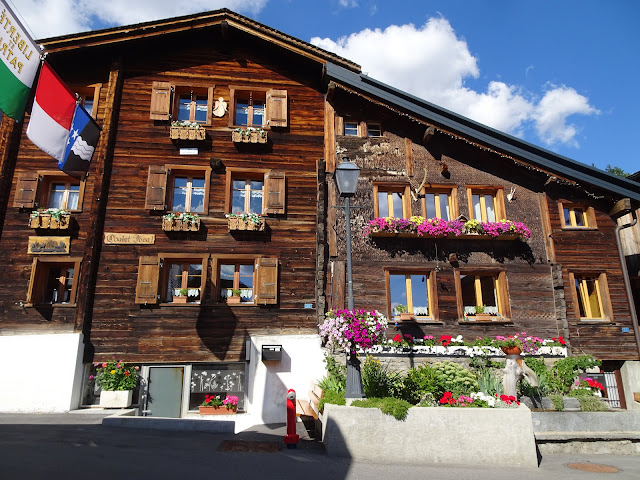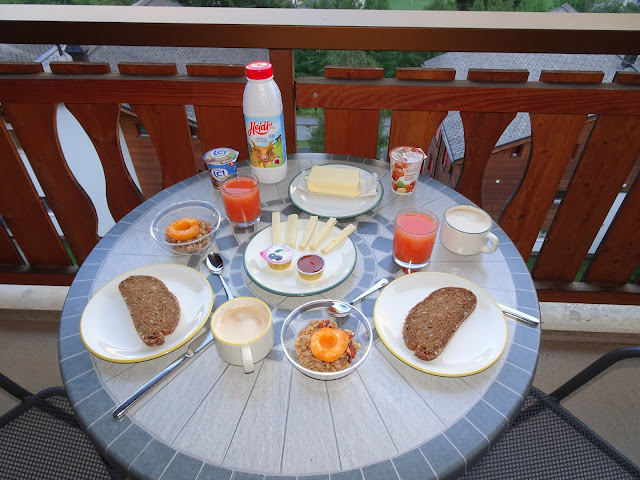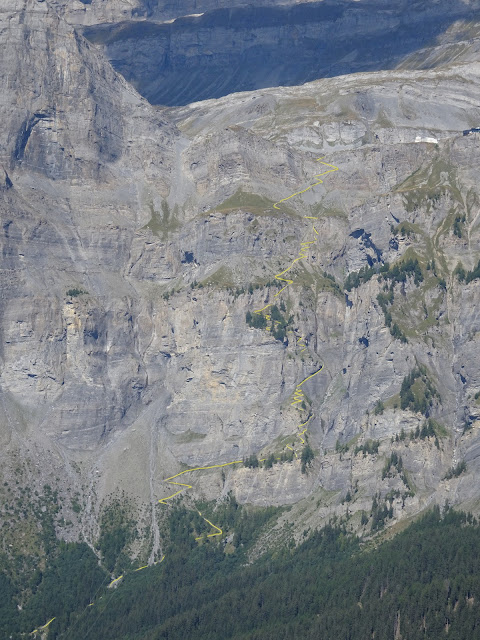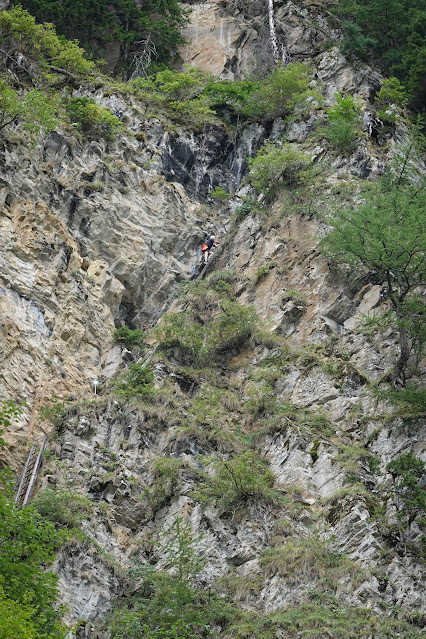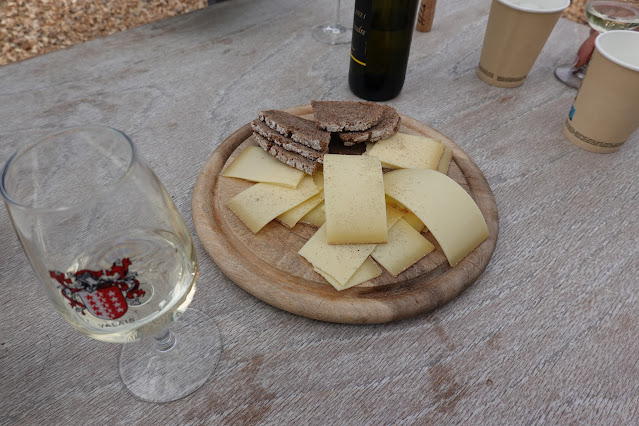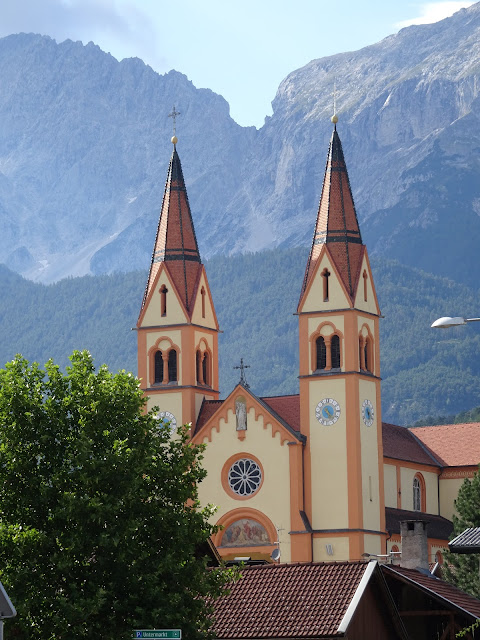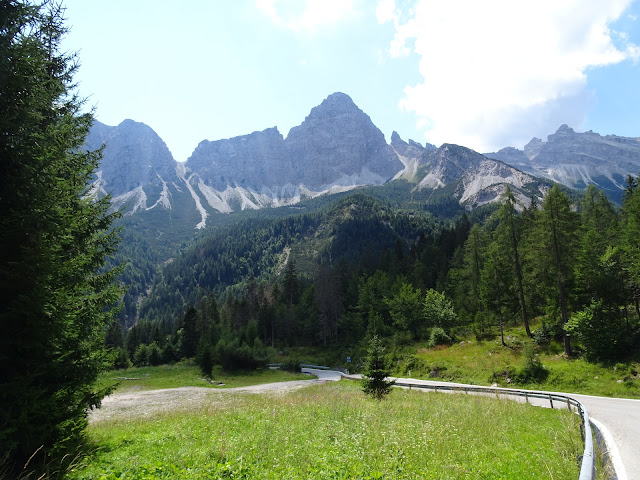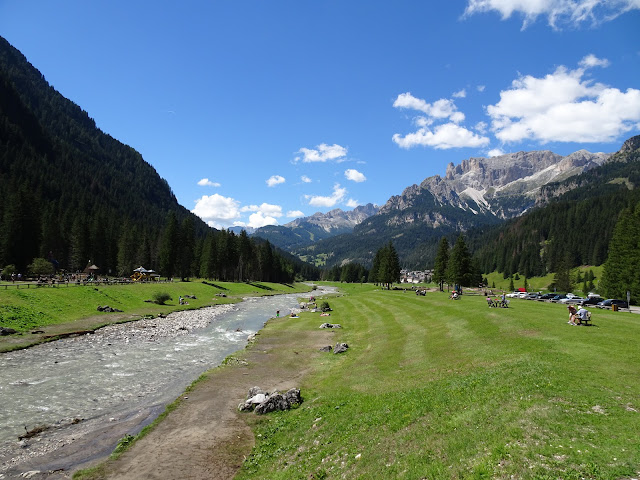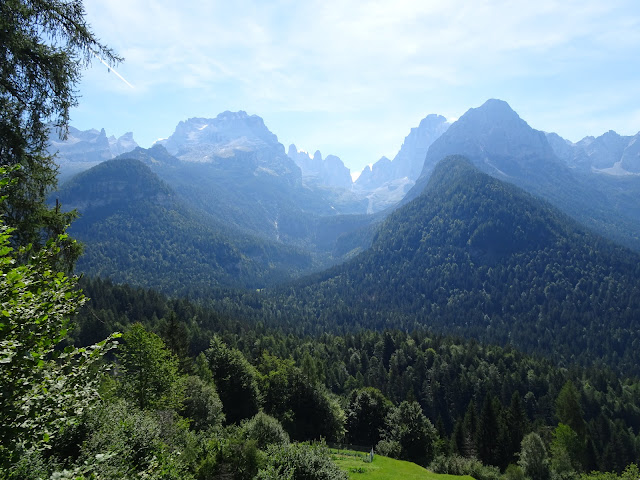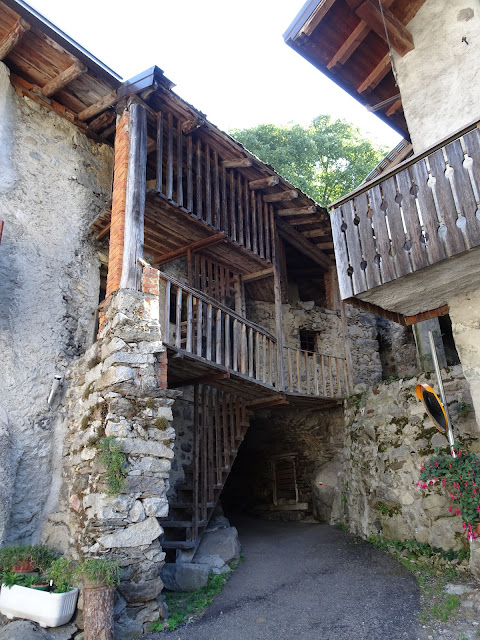After weeks of cycling we left the bikes behind and packed our hiking gear. First stop: Leukerbad, a small mountain village in the Swiss Alps, surrounded by vertical cliffs. The place is famous for the therapeutic effect of the thermal water emanating from several springs. The first baths were built and used by the Romans!
We rented an apartment for a week with a balcony and a fabulous view!
The Via Ferrata is the longest in Switzerland (9km), takes 8 hours to complete, with 1,158m uphill climb and is rated extremely difficult. There is even a hanging bridge in a cave! Not for somebody with vertigo!
There are 65 springs in town, emitting 3,9 million litres daily of up to 51° C warm water. There is a large public thermal bath with fabulous facilities, as well as many private ones in hotels. The image above shows one of the springs with a bath from the old days.
A 600-metre-long footbridge, which is suspended four metres above the river bed, passes through the imposing Dala Gorge, where some of the thermal springs are visible.
The Gemmi trail is an old mountain path leading over the Gemmi Pass into the Bernese Alps. It has been used for centuries by soldiers, pilgrims and traders. The trail is spectacularly carved into the rock face. I highlighted it in yellow below to make it more visible.
The trading route heading north into the Bernese Alps.
Here is an example of the Swiss attitude to risk in the mountains: you are responsible for yourself! We followed another old trading route from Leukerbad to Albinen that starts as an unsealed forest track, turns into a hiking trail and then turns into a sequence of 8 ladders going up 100m on a cliff! There was no requirement to wear a harness and clip in, no warnings and some of the ladders had rungs missing.
After the second ladder, we decided it was getting too exposed and we turned around.
In the old days, the locals climbed these ladders with their goods to go to the markets! It appears they still don't mind the exposure.
We circumnavigated the cliff along the road and through tunnels. From the top we climbed back down to inspect the exit. You can see the road below where the climb starts. Definitely not for us!
... and some great food along the way.
Grand Bisse de Lens
View of the valley floor with the Rhone river. Lake of Geneva is around the corner to the right and the Mont Blanc massive is behind these mountains.
... with the traditional glass of Valais white wine, bread and cheese along the way with our hostess and tour guide Sophie.
The technique is still the same as in the old days. The timber irrigation channel is hanging from cantilevers that are wedged into the rock wall (with very crumbly rock!). The current method above and a section of the original channel below.
These walks are very diverse and interesting with a comfortable incline, fabulous views, ....
.. hanging bridges, ....
... even tunnels.
The last few days we spent in Chamonix in a small apartment with great views, a bakery across the road and a deli around the corner.

